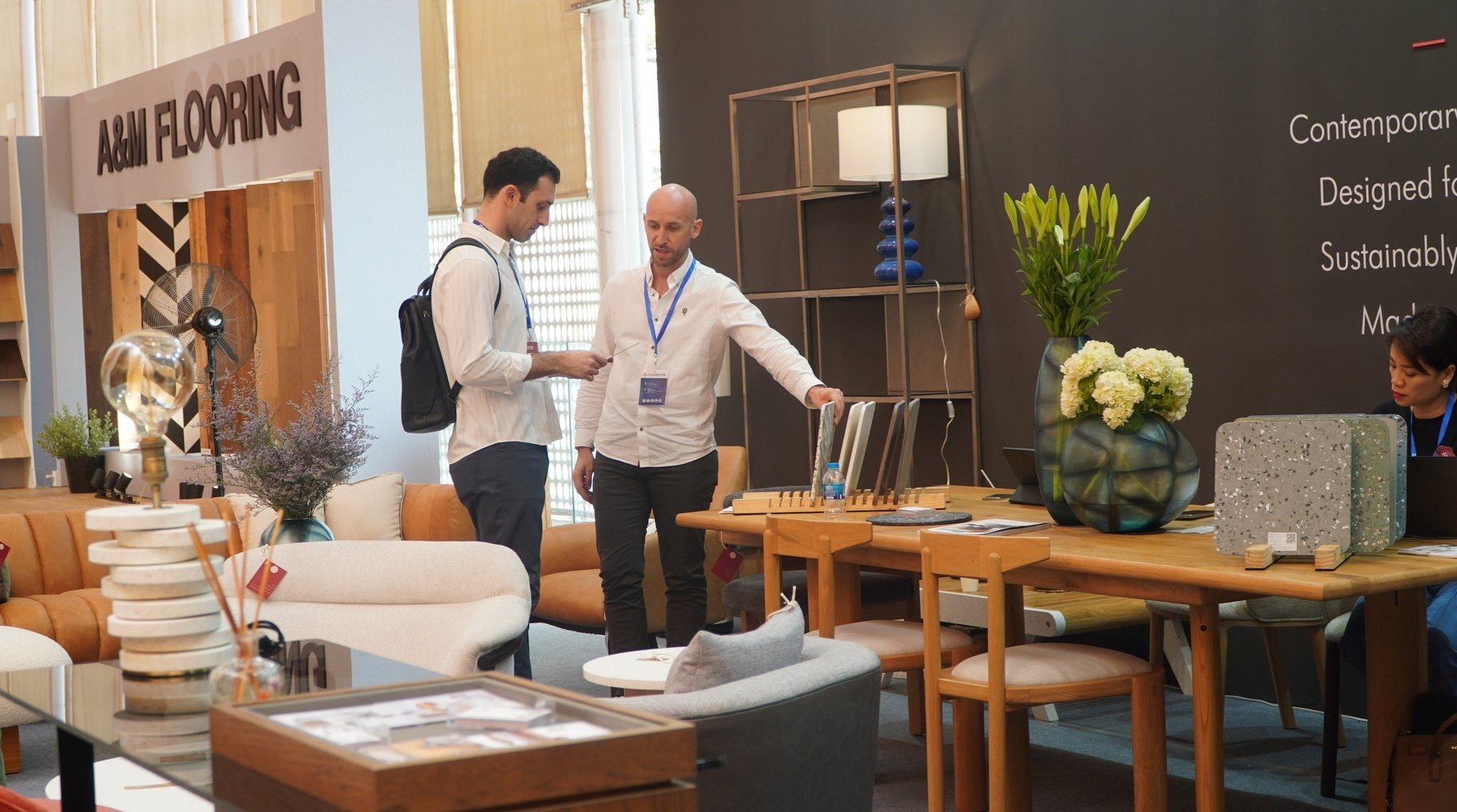November 25, 2025 | 04:50 GMT +7
November 25, 2025 | 04:50 GMT +7
Hotline: 0913.378.918
November 25, 2025 | 04:50 GMT +7
Hotline: 0913.378.918
The new tariff policy that the United States has announced will be implemented on April 9 for products imported from Vietnam that have a significant impact on Vietnamese enterprises, particularly those that are heavily reliant on the US market, such as the wood sector.
The wood industry is responsible for a substantial portion of Vietnam's export turnover, and the 46% tax rate has immediately generated a wave of concern within the business community.
In anticipation of this situation, Phung Quoc Man, Chairman of the Handicraft and Wood Industry Association of Ho Chi Minh City (HAWA), stated that HAWA had conducted a survey of 50 exporters within the associations to gather information, ideas, and proposals from enterprises in order to identify the most effective solutions to support them in the short and long term.
The United States is the primary market for 52% of the 50 enterprises in the survey, which accounts for more than 50% of their export revenue.

To support businesses in finding new customers, last March, the Handicraft and Wood Processing Association of Ho Chi Minh City (HAWA) organized the Hawa Expo 2025 exhibition, attracting many international buyers to visit and learn about the supply of wood and wood products, furniture in Vietnam. Photo: Nguyen Thuy.
Businesses anticipate that the implementation of countervailing duties by the United States could result in an immediate decrease in order volumes and a reduction of new orders from customers, according to by surveys. The supply chain has been severely disrupted as a result of numerous clients' announcements of order halts or requests for delivery delays. Simultaneously, price pressures are increasing, as certain consumers are requesting price reductions for products. Despite the fact that input and labor costs have not decreased, this imposes additional responsibilities on suppliers to ensure the stability of prices.
However, businesses have to deal with the issue of excessive inventories as a result of their inability to export products, which has resulted in financial strain and a decrease in profitability. Many companies have been forced to shut down factories or suspend production, resulting in job losses and severely impacting workers’ incomes.
In terms of long-term challenges, wood industry businesses caution that the negative impact will be even more pronounced if this tax rate continues to be applied for an extended period. One of the primary hazards that Vietnamese enterprises may encounter is the loss of market share and the resulting decline in competitiveness in comparison to countries such as Thailand, Malaysia, or Mexico.
The competitive advantage of Vietnamese wood products is declining as a result of the excessively high tariffs. Consequently, customers are likely to relocate their sourcing to countries with reduced tariffs, thereby reducing Vietnam's primary export markets. This not only reduces revenue but also makes it difficult to sustain existing markets, forcing companies to seek out new markets—a costly and time-consuming process.
Furthermore, businesses are being compelled to restructure their production models in response to substantial cost pressures. This not only results in instability but also diminishes profit margins and even poses a bankruptcy risk for numerous small and medium-sized enterprises.
In an effort to mitigate dependence on the U.S. market, numerous wood industry enterprises affiliated with HAWA have proactively transitioned to alternative markets, including Japan, Australia, Europe, and Canada—all amid these tensions. In order to sustain production and stimulate growth, certain organizations are also actively pursuing new partners and customers to replace U.S. buyers.
In addition to market diversification, businesses are also striving to reduce production costs by enhancing labor efficiency and sourcing more cost-effective raw materials to reduce the overall price of their products. At the same time, many enterprises are placing greater emphasis on enhancing design and product quality to create differentiation and increase added value.
Nevertheless, not all organizations have established specific strategies. Some organizations are still unprepared, as they have been entirely dependent on the U.S. market. They are currently awaiting official updates from government authorities or feedback from customers.
Enterprises are advocating for the Vietnamese government to escalate negotiations with the United States in order to mitigate countervailing duties in light of the present circumstances. A gradual and reasonable tariff reduction roadmap, in conjunction with the reduction of export and import tariffs on American wood materials, would provide businesses with additional time to adjust to the new business environment.
"Enterprises also hope that the government will consider and promote policies to help balance the trade relationship between Vietnam and the U.S. Reducing export tariffs on wood products and increasing financial support for exporters are crucial measures to help them weather this difficult period. We also request immediate assistance in the form of legal consultation and information to address the current situation," stated Mr. Phung Quoc Man.
Translated by Linh Linh

(VAN) An Giang promotes supply-demand connections, standardizes quality and builds value chains, creating a foundation for sustainable bird’s nest development and aiming to expand exports.
/2025/11/24/5339-4-nongnghiep-075331.jpg)
(VAN) Recently, the conference on 'Sustainable Fisheries Linkage Chain - Tilapia for Export' took place in Tien Hai commune, Hung Yen province.
/2025/11/21/4309-2-153400_128.jpg)
(VAN) Green and low-emission rice is paving the way for Vietnamese rice to enter high-end markets, marking the beginning of a transformation journey toward greening and elevating the national rice brand.

(VAN) ‘Right to Win’ outlines a national action plan that shapes a new vision for Viet Nam’s agriculture in an era of renewal and global integration.

(VAN) Lam Dong’s farmed sturgeon output this year is expected to reach 2,300 tons, worth VND 450 billion, affirming the brand’s position on the market.

(VAN) A surge in Ukrainian egg exports, largely driven by soaring sales to the UK over the last few years, has notably pushed up egg prices on the domestic market.

(VAN) The price of Arabica Catimor coffee in Quang Tri is currently at VND 25,000–27,000/kg (fresh cherries), the highest level ever recorded